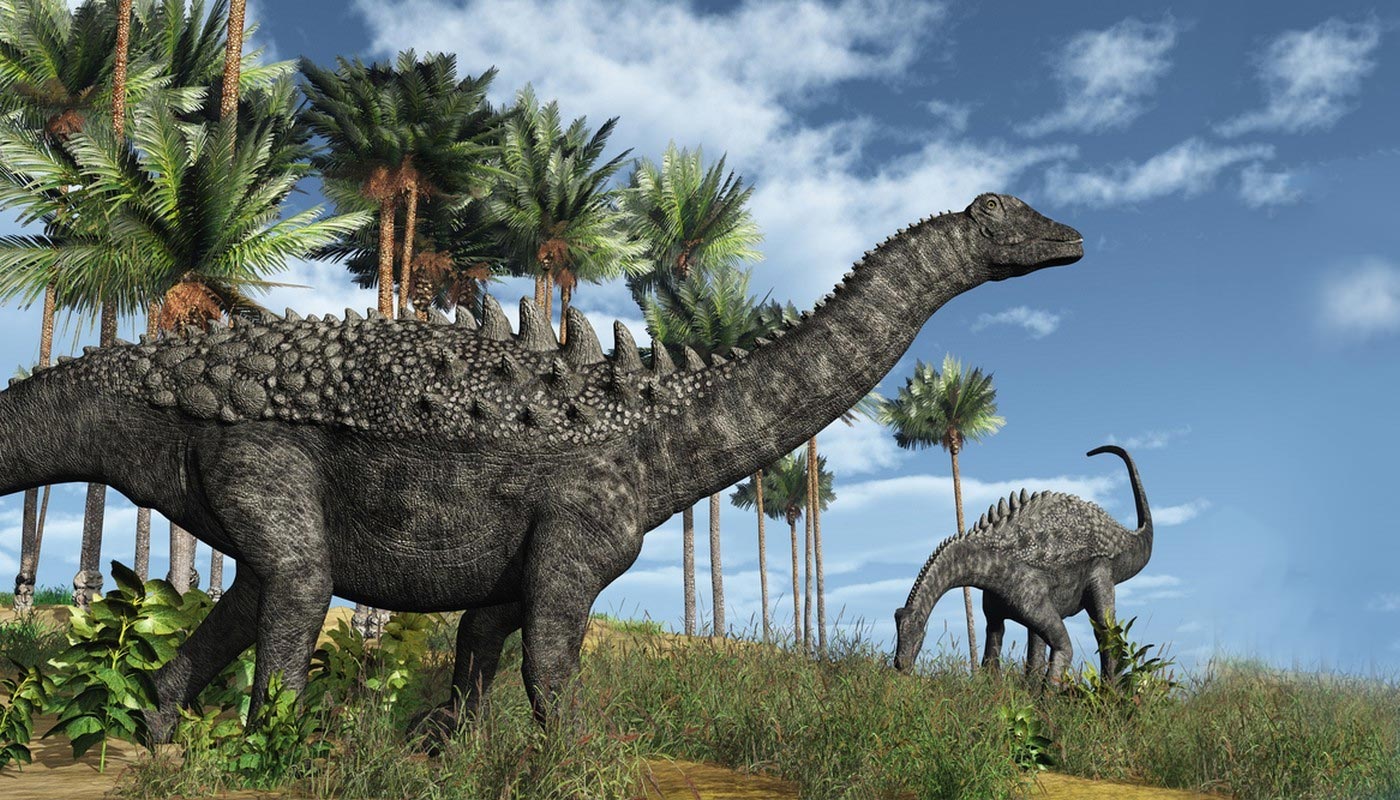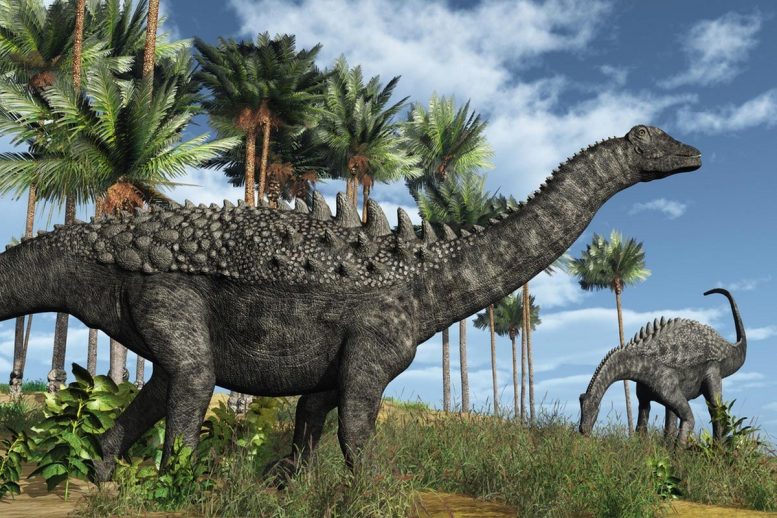
[ad_1]

Titanosaurs were common at the time the asteroid struck at the end of the Cretaceous 66 million years ago.
A new statistical analysis of dinosaur diversity shows that they were not in decline at the time of their extinction by an asteroid struck 66 million years ago.
Researchers from the University of Bath and the Natural History Museum in London say that if the impact hadn’t happened, the dinosaurs could have continued to dominate the Earth.
Dinosaurs were widespread globally at the time of the asteroid impact in the late late Cretaceous period, occupying all continents of the planet and were the dominant animal form of most terrestrial ecosystems.
However, it is still controversial among paleobiologists whether dinosaurs were decreasing in diversity at the time of their extinction.
Statistical modeling
To answer this question, the research team collected a number of different dinosaur family trees and used statistical models to assess whether each of the major dinosaur groups were still capable of producing new species at that time.
Their study, published in the journal Royal Society Open Science, found that dinosaurs weren’t in decline before the asteroid hit, contradicting some previous studies. The authors also suggest that if the impact had not occurred, dinosaurs could have continued to be the dominant group of land animals on the planet.
The study’s lead author, Joe Bonsor, is doing his PhD jointly at the Milner Center for Evolution at the University of Bath and the Natural History Museum.
He said: “Previous studies by others have used various methods to draw the conclusion that dinosaurs would go extinct anyway, as they were in decline towards the end of the Cretaceous period.
“However, we show that if you expand the dataset to include newer dinosaur family trees and a wider range of dinosaur types, the results don’t actually all point to this conclusion, in fact only about half of them do. . “
Sampling bias
It is difficult to assess the diversity of dinosaurs due to gaps in the fossil record. This may be due to factors such as which bones are preserved as fossils, how accessible the fossils are in the rock for them to be found, and the locations where paleontologists look for them.
The researchers used statistical methods to overcome these sampling biases by examining the speciation rates of dinosaur families rather than simply counting the number of species in the family.
Joe Bonsor said: “The main point of our article is that it’s not as simple as looking at some trees and making a decision – The inevitable big bias in the fossil record and lack of data can often show a decline in species, but this it may not be a reflection of reality at the time.
“We may never know the true evolution rates of dinosaurs, as the only way to know for sure is to fill in the gaps in the record to get the best answer, and we just don’t think we’re still there.
“Our data currently do not show that they were in decline, in fact some groups such as hadrosaurs and ceratopsians were thriving and there is no evidence to suggest they would have died 66 million years ago if the extinction event had not occurred.”
Although mammals existed at the time of the asteroid strike, it was only due to the extinction of the dinosaurs that led to the liberation of the niches, allowing mammals to fill them and subsequently dominate the planet.
Reference: “Dinosaur Diversification Rates Were Not Declining Before the K-Pg Boundary” by Joseph A. Bonsor, Paul M. Barrett, Thomas J. Raven and Natalie Cooper, November 18, 2020, Royal Society Open Science.
DOI: 10.1098 / rsos.201195
The research was funded by the Leverhulme Trust and the Natural History Museum.
[ad_2]
Source link